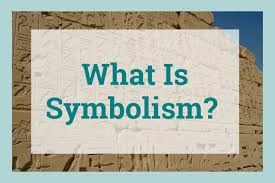The word “Skşi: Understanding The Multifaceted World of an Ancient Tradition” might sound unfamiliar to many, yet it represents a tradition steeped in history, culture, and profound meaning. This ancient practice, rooted in centuries-old customs, has played a vital role in shaping the societies that have cherished it. Whether you’re a historian, a cultural enthusiast, or simply someone curious about global traditions, the world of Skşi offers a fascinating glimpse into the lives, beliefs, and practices of ancient communities.
Unveiling the Origins of Skşi

Skşi, as a tradition, is deeply embedded in the social and religious fabric of the regions where it was practiced. While its exact origins are shrouded in mystery, historians believe that Skşi emerged over a thousand years ago, during a time when ancient civilizations were flourishing. This period saw the rise of intricate social structures, the establishment of religious rites, and the development of cultural practices that would endure for generations.
The roots of Skşi can be traced back to early spiritual practices, where it served as a medium for connecting with the divine. In many ways, Skşi was more than just a ritual; it was a way of life. The people who practiced Skşi believed that through these ceremonies, they could maintain harmony with the natural world and the spiritual realm. Over time, Skşi evolved, absorbing influences from various cultures and adapting to the changing needs of society.
The Cultural Significance of Skşi
At its core, Skşi is a reflection of the values, beliefs, and traditions of the communities that practice it. Each aspect of Skşi, from the rituals to the symbols, carries deep meaning and significance. In many cultures, Skşi is seen as a way to preserve the wisdom of the ancestors, ensuring that the knowledge and customs of the past are passed down to future generations.
One of the key elements of Skşi is its emphasis on community. The rituals are often communal affairs, involving large gatherings where members of the community come together to celebrate, mourn, or seek guidance. These gatherings serve to strengthen social bonds, reinforce shared values, and create a sense of belonging among participants.
Moreover, Skşi plays a crucial role in marking the passage of time. Many Skşi rituals are tied to the cycles of nature, such as the changing of the seasons or the phases of the moon. By aligning these rituals with natural phenomena, practitioners of Skşi maintain a close connection with the environment and the rhythms of the earth.
Rituals and Practices: A Deep Dive into Skşi
The rituals of Skşi are as diverse as the cultures that practice them. However, certain themes and elements are common across many different traditions. These include the use of symbolic objects, the recitation of specific prayers or chants, and the performance of dance or music.
One of the most iconic aspects of Skşi is the use of sacred objects. These objects, often passed down through generations, are believed to hold spiritual power and are used to invoke blessings, protection, or guidance. For example, some Skşi traditions involve the use of intricately carved wooden masks, which are worn during ceremonies to represent spirits or deities.
Another key element of Skşi rituals is the role of the officiant. This individual, often a priest or elder, is responsible for leading the ceremony and ensuring that it is conducted according to tradition. The officiant’s knowledge and expertise are highly respected, as they are seen as the bridge between the physical and spiritual worlds.
Music and dance also play a significant role in Skşi. These art forms are used to convey emotions, tell stories, and create a sense of connection between the participants and the spiritual realm. The rhythms of Skşi music are often complex and layered, reflecting the intricate nature of the traditions themselves.
The Symbolism in Skşi

Symbols are central to the practice of Skşi, and each one carries a wealth of meaning. Whether it’s the colors used in ceremonial attire, the designs carved into sacred objects, or the patterns of the dances performed, every element is imbued with symbolism.
For instance, in some Skşi traditions, the color red is associated with life and vitality, while black represents death and the afterlife. These colors are often used in ceremonial garments, with practitioners wearing specific colors to align themselves with the spiritual forces they wish to invoke.
Similarly, the patterns found in Skşi art and design are not merely decorative. They often represent complex cosmological concepts, such as the structure of the universe or the journey of the soul. Understanding these symbols requires a deep knowledge of the tradition’s mythology and spiritual beliefs.
Skşi and the Natural World
One of the most remarkable aspects of Skşi is its deep connection with the natural world. Unlike many modern religious practices, which often separate the spiritual from the material, Skşi sees no such division. The natural world is seen as an integral part of the spiritual realm, and the two are believed to be in constant interaction.
This connection is evident in the way Skşi rituals are timed to coincide with natural events, such as the solstices, equinoxes, or lunar phases. Practitioners of Skşi believe that these times are when the boundaries between the physical and spiritual worlds are at their thinnest, making it easier to communicate with the divine.
The natural elements themselves also play a role in Skşi. Earth, water, fire, and air are all seen as sacred, each representing different aspects of life and the cosmos. For example, fire is often used in Skşi rituals to symbolize purification, transformation, and the presence of spiritual power.
Skşi in the Modern World
As with many ancient traditions, Skşi has faced challenges in the modern world. The spread of globalization, the rise of secularism, and the influence of other religious practices have all contributed to the decline of Skşi in some regions. However, in recent years, there has been a resurgence of interest in Skşi, as people seek to reconnect with their cultural roots and explore alternative spiritual practices.
Today, Skşi is practiced by a diverse range of people, from those who have inherited the tradition from their ancestors to individuals who have discovered it later in life and adopted it as their own. This revival of interest has led to a renewed appreciation for the richness and complexity of Skşi, as well as efforts to preserve and revitalize the tradition for future generations.
Skşi and Cultural Identity
For many practitioners, Skşi is more than just a set of rituals; it is a key part of their cultural identity. In a world where traditional ways of life are increasingly threatened by modernization and globalization, Skşi serves as a powerful reminder of the importance of heritage and the need to preserve cultural diversity.
By maintaining the practice of Skşi, communities are able to keep alive the stories, values, and beliefs that define them. This is especially important in regions where cultural traditions have been suppressed or marginalized. For these communities, Skşi is not just a spiritual practice, but a form of resistance and a way to assert their identity in the face of external pressures.
The Future of Skşi
Looking ahead, the future of Skşi will depend largely on the efforts of those who practice and promote it. There are numerous challenges to overcome, from the loss of traditional knowledge to the pressures of modern life. However, there is also a growing awareness of the need to preserve and protect ancient traditions like Skşi, not just for the sake of cultural heritage, but also for the unique insights they offer into human spirituality and our relationship with the world.
Education and outreach will be key to the survival of Skşi. By raising awareness of the tradition and its significance, practitioners can help to ensure that it is passed down to future generations. This may involve adapting the practice to suit modern circumstances, while still remaining true to its core principles.
Skşi and Global Cultural Heritage

In a broader context, Skşi is part of the world’s cultural heritage, representing the diversity and richness of human traditions. As such, it is important to recognize and respect Skşi, along with other ancient practices, as valuable contributions to the global tapestry of human culture.
Efforts to document and preserve Skşi are not just about saving a single tradition, but about safeguarding the collective memory of humanity. By studying and understanding Skşi, we gain insights into the ways in which different cultures have understood the world, their place in it, and their relationship with the divine.
Rediscovering Skşi: Resources for Further Exploration
For those interested in learning more about Skşi, there are a number of resources available. From academic studies to cultural centers, these resources offer valuable information and insights into the tradition and its practice. Many communities also host Skşi events or workshops, providing opportunities for people to experience the tradition firsthand.
Online platforms have also played a role in the revival of interest in Skşi. Websites, social media groups, and online forums have become spaces where practitioners can share knowledge, discuss the tradition, and connect with others who are interested in Skşi.
Embracing the Wisdom of Skşi
In the end, Skşi is more than just a historical curiosity; it is a living tradition that continues to inspire and guide people today. By embracing the wisdom of Skşi, we can gain a deeper understanding of ourselves, our communities, and the world around us.
Whether through the study of its symbols, the practice of its rituals, or the exploration of its spiritual teachings, Skşi offers valuable lessons that are as relevant now as they were centuries ago. In a world that often feels disconnected and fragmented, the holistic and integrative approach of Skşi provides a way to reconnect with what truly matters.
Conclusion
The tradition of Skşi is a testament to the enduring power of ancient practices and their ability to adapt and thrive in the modern world. By understanding and appreciating Skşi, we can not only preserve a vital part of our cultural heritage but also enrich our own lives with the profound insights it offers. As we look to the future, the lessons of Skşi remind us of the importance of community, the wisdom of the natural world, and the deep connections that bind us all together. For more information please get in touch